When my coworker, Christie, stepped outside her front door on May 8, she saw a nest. “When did that happen?”
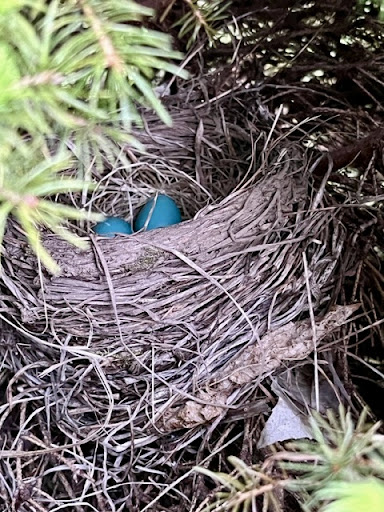
May 8, 2023
Fortunately, for us, she documented the birds’ development from eggs to fledglings. Let’s examine their growth by utilizing Christie’s photos.
This cup-shaped nest is a sturdy structure made of dried grass and twigs that are held together with mud. Its location – tucked inside the dense foliage of an Alberta spruce – could shelter eggs and chicks from predators. The nest’s construction, its location near human habitation, and those sky-blue eggs identify the birds as American robins. Soon the protective mother confirmed this assumption.
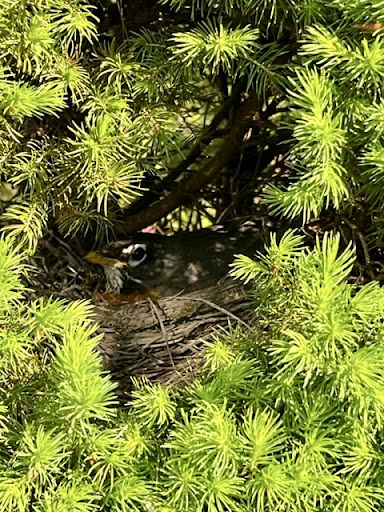
May 10, 2023
Mother robin incubated the eggs day after day. By May 16, the brood contained four beautiful, oval eggs, the average number for a robin’s nest.
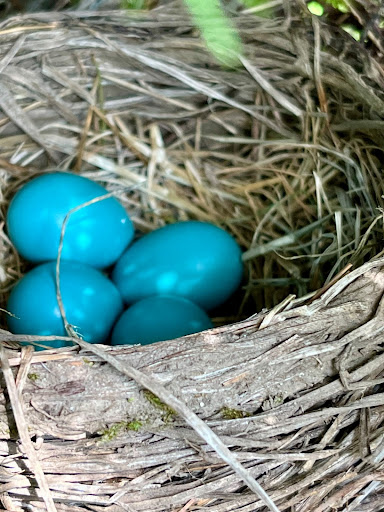
May 16, 2023
By May 22, exactly 14 days after our first photo, all four chicks had hatched. The hatchlings are, according to All About Birds, “helpless at birth, mostly naked with spare whitish down.” Fleshy and pink, with transparent skin and bulging eyes, they completely depend on their parents. At two days old, the hatchlings remind me of their reptilian ancestors! Notice their thickening down that will provide warmth when the mother collects food.
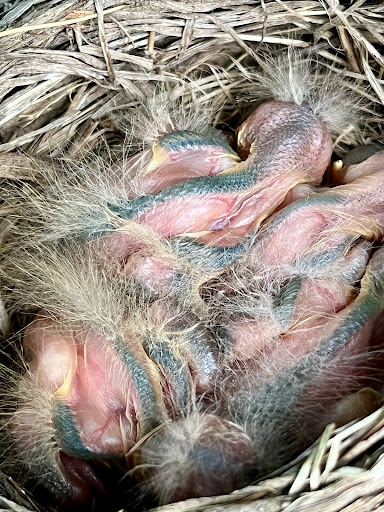
May 24, 2023
The chicks are still fragile on day 3, unable to stand or to open their eyes. This ultra-brief clip shows their beaks, their ability to move (a little), and the very beginnings of feathers.
The development of feathers is more conspicuous by day 6. At this stage, tubular sheaths enclose the emerging feathers, giving the nestlings a spiky appearance.
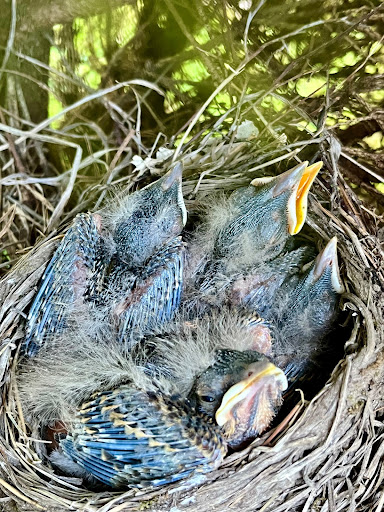
May 27, 2023
Food is crucial to the nestlings’ rapid development. Journey North describes their diet as follows:
”For the first four days of a nestling’s life, the parent birds regurgitate partly digested food into each baby’s mouth. By five days of age, the nestlings get earthworms that parents break into small mouthfuls . . . Soon parents give them whole worms and large insects.”
Both parents feed the babies . . . many, many times. “A robin might make 100 feeding visits to its nest each day.” If you have songbirds nesting in your backyard, and you probably do, you’ve likely observed those never-ending trips. And, if you’ve been lucky enough to have a nest nearby, you’ve seen the nestlings’ response: wide-open mouths eager for the next meal.
All that effort pays off. By day 11, the young birds’ feathers are coming in nicely; so is their coloration.
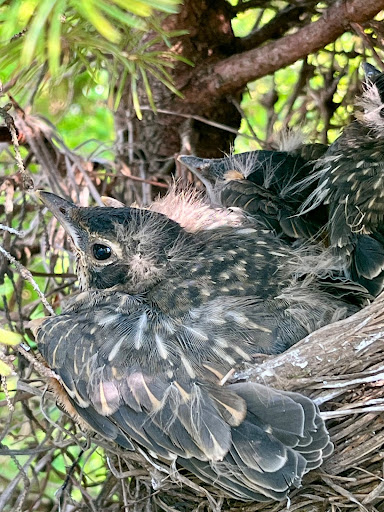
June 1, 2023
However, it’s getting way too crowded in that little nest.
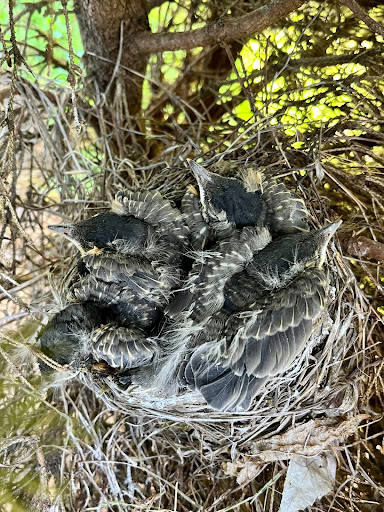
May 31, 2023
The nestlings now resemble their parents, albeit with more fluff and spots and weaker muscles.
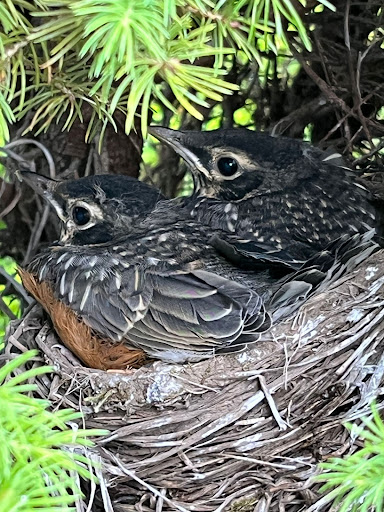
June 4, 2023
After two weeks of intensive growth, the nestlings are ready to fledge. They are right on track for, according to the National Audubon Society, “Young leave the nest about 14-16 days after hatching.”
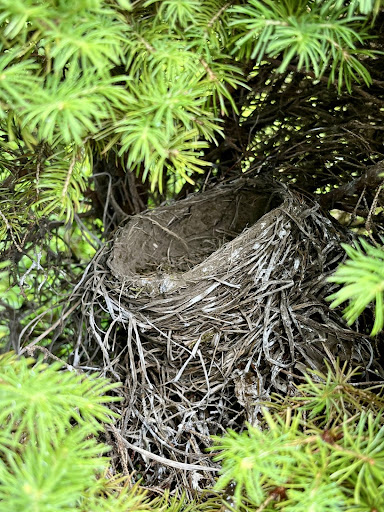
June 5, 2023
The young robins will rely on their parents a while longer as they learn to feed, fly, and avoid danger. I wish them luck; they will need it to survive their first year.
Next week, we’ll learn about Bonnie’s birds. Until then, pay some attention to your neighbors. I’m looking forward to the newest kids in my yard:
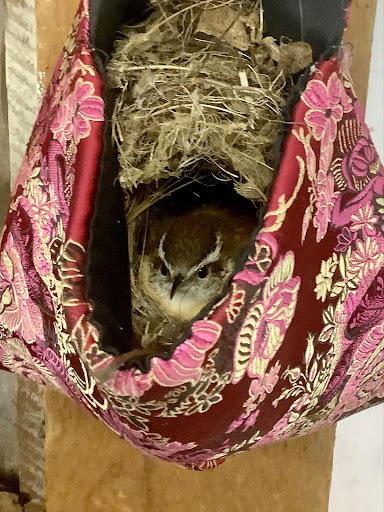
Carolina Wren, June 8, 2023
Courtesy: Louis Vanrenen